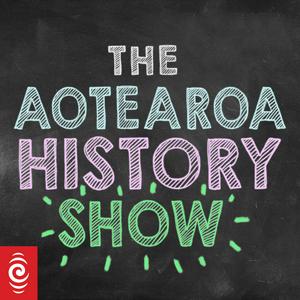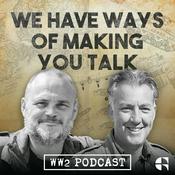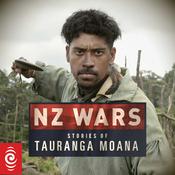29 episodes

New Zealand's Pacific Empire
02/10/2022 | 34 mins.
New Zealand has had some big ambitions in the Pacific and mixed relations with our neighbours.Watch the video version of the episode here Through much of the 19th century NZ politicians and administrators dreamed of running a vast empire in the Pacific. Parts of that dream came true - although for some, it was more like a nightmare.Today, Aotearoa has fewer Pacific possessions that it once had, but the history of our attempts at colonial expansion has effects which continue to reverberate throughout the Pacific.In this episode we discuss:Where the idea of a NZ run Pacific Empire came from.How competition with France contributed to the push for NZ to colonize other pacific islands.Why British authorities were often reluctant to go along with the plan.How NZ eventually came to control Samoa, Cook Islands, Niue, and Tokelau.The 1918 flu outbreak in Samoa and the rise of the Mau movement.Samoan resistance to NZ control, including the "Black Saturday" killing of Samoan protesters by NZ police.The killing of Cecil Hector Larsen in Niue.Decolonisation and independence of some of NZs Pacific territories post WWII.For more on this subject:Boyd, Mary. 'New Zealand and the other Pacific Islands.' In The Oxford illustrated history of New Zealand,Crocombe, Ron. Pacific neighbours: New Zealand's relations with other Pacific islands.Henderson, John. 'New Zealand and Oceania.' In New Zealand in world affairs IV, 1990-2005. Howe, K. R., Robert C. Kiste, and Brij V. Lal, eds. Tides of history: the Pacific Islands in the twentieth century. Ross, Angus. New Zealand aspirations in the Pacific in the nineteenth century. Salesa, Damon. 'New Zealand's Pacific.' In The new Oxford history of New Zealand.NZ and the Pacific Islands - Te AraGo to this episode on rnz.co.nz for more details

Why isn't New Zealand part of Australia?
22/9/2022 | 30 mins.
It seems an almost heretical question, but it’s gotta be asked! Why are NZ and Australia different countries? You might be surprised to know that we did consider joining up with our mates across the Tasman back in the late 19th/early 20th century, but it never worked out. And that’s just a small fragment of the fascinating history of our Trans-Tasman relationship with our mates across the ditch. Watch the video version of the episode hereIt seems an almost heretical question, but it's gotta be asked! Why are NZ and Australia different countries? You might be surprised to know that we did consider joining up with our mates across the Tasman back in the late 19th/early 20th century, but it never worked out. And that's just a small fragment of the fascinating history of our Trans-Tasman relationship with our mates across the ditch.In this episode we discuss:How colonies in Australia became hubs for trade with Māori in Aotearoa.The different attitudes of Europeans towards indigenous New Zealanders and Australians.How the colony of New Zealand grew out of New South Wales.The early trans-tasman connections of New Zealand colonists.How the colonies of Australia Federated into the Commonwealth of Australia and why New Zealand didn't join up.The story of the Anzacs, and tensions between the NZ and Australian Governments during WWII.How NZ and Australia came together through military and trade agreements in the second half of the 20th century. For more on this subject:The Prickly Pair by Denis McLeanA Destiny Apart by Keiieth SinclairRemaking the Tasman World by Philippa Mein SmithTe Ara Encyclopaedia - Australia and New ZealandGo to this episode on rnz.co.nz for more details

Women's Suffrage
18/9/2022 | 32 mins.
NOTE: This episode has been reuploaded to correct some inaccuracies in the original version. We all know New Zealand was the first country in the world where women could vote. But do you know how we got there? The path to suffrage is littered with alcohol, hidden heroes & dirty tricks.Watch the video version of the episode hereNOTE: This episode of The Aotearoa History Show has been re-uploaded to correct some inaccuracies in the original version. These changes are as follows:A segment referring to an effort by anti-suffrage MPs to exclude Māori women from suffrage has been removed. It appears those MPs were not actually serious about implementing this change to the bill.A segment saying Premier Richard Seddon "opposed suffrage" and acted deliberately to sabotage it has been revised to reflect a degree of uncertainty among historians about Seddon's views of suffrage.A line saying 19th century European women were the "property" of their husbands or fathers has been removed. Women were often treated as property but were not legally defined as such.Various changes have been made to segments referring to Kate Sheppard and the WCTU to include a perspective among some historians that the WCTU's role in the suffrage campaign was less central than previously understood.A number of small corrections have been made to places and dates.On 19 September 1893 Aotearoa became the first self-governing country in the world where women could vote. So... How did it happen? Well that's a wild ride from the French Revolution, through the colonisation of Aotearoa, to battles over booze, to ultimate victory. …Go to this episode on rnz.co.nz for more details

Number 8 Wire
11/9/2022 | 31 mins.
New Zealanders like to think we have a "Number 8 Wire Mentality" - a rough and ready enthusiasm for fixing and building stuff with limited resources. New Zealanders like to think we have a "Number 8 Wire Mentality" - a rough and ready enthusiasm for fixing and building stuff with limited resources. From the first Māori arrivals who worked out how to grow tropical plants in our cold, wet climate - to modern scientific breeding and robotics, New Zealand agriculture has always been at the cutting edge.Watch the video version of the episode hereBut innovation isn't always good news for all people, or for the environment - so in this episode we dig into the history of New Zealand agriculture through the lens of innovation. In this episode we discuss:How Māori worked out which native New Zealand plants were edible.How Māori managed to grow tropical plants like kūmara in New Zealand's cold and wet climate. New Zealand innovations in sheep breeding and shearing - including the violent disputes over wide shearing combs in Australia. New Zealand's embrace of topdressing, and the devastating impacts of phosphate mining in Nauru.A whole lot more!For more on this subject:Making a New Land edited by Eric Pawson & Tom BrookingThree Steel Teeth by Mark FilmerFarming Inventions - Te Ara EncyclopaediaGo to this episode on rnz.co.nz for more details

NZ Railways
04/9/2022 | 25 mins.
From a standing start of little tank engines chugging along wooden rails, New Zealand built a vast rail network, made up of enough steel rail to wrap halfway around the moon.All aboard for a voyage into the history of New Zealand's railways! Watch hereFrom a standing start of little tank engines chugging along wooden rails, New Zealand built a vast rail network, made up of enough steel rail to wrap halfway around the moon.If our rail network was once so massive, why is it now a shadow of its former glory?In this episode we discuss:How Māori originally travelled overland in Aotearoa.The development of railways in the UK and the impact they had on society.Early efforts at building short railways in New Zealand.Premier Julius Vogel's massive expansion of the rail network.The importance of rail for New Zealand's economy, education, politics and culture.The challenges and opportunities rail created for Māori.The lives of those who built and maintained the rail network.The replacement of rail with automobiles and aircraft.Arguments over the return of rail For more on this subject:Can't Get There From Here by Andre BrettTrainlands by Neill AtkinsonTe Ara Encyclopaedia - Railways Go to this episode on rnz.co.nz for more details
More History podcasts
Trending History podcasts
About The Aotearoa History Show
Listen to The Aotearoa History Show, The Rest Is History and many other podcasts from around the world with the radio.net app

Get the free radio.net app
- Stations and podcasts to bookmark
- Stream via Wi-Fi or Bluetooth
- Supports Carplay & Android Auto
- Many other app features
Get the free radio.net app
- Stations and podcasts to bookmark
- Stream via Wi-Fi or Bluetooth
- Supports Carplay & Android Auto
- Many other app features


The Aotearoa History Show
download the app,
start listening.










































